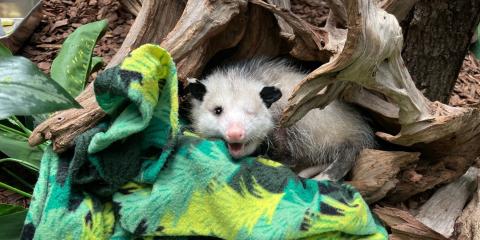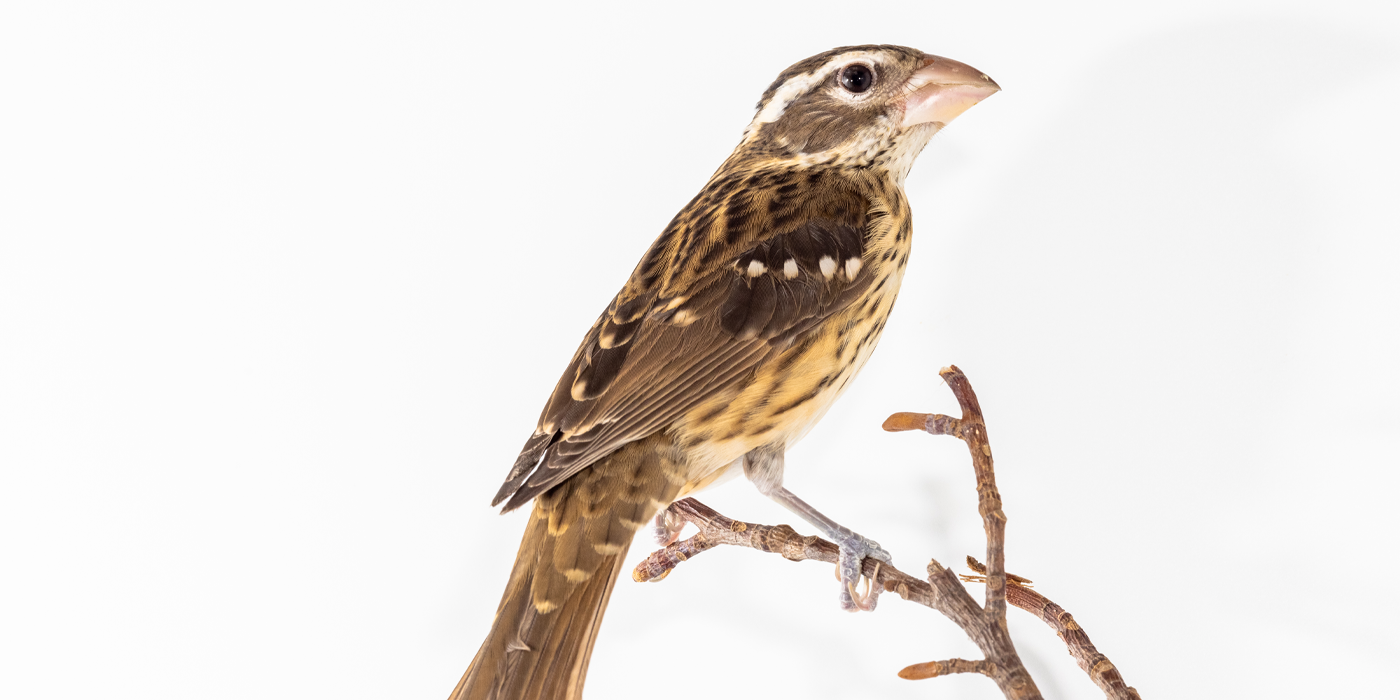Physical Description
Size
Native Habitat
In the summers, they prefer deciduous woods, especially near forest edges or places, like parks, riverbanks and orchards, that have a mix of tall trees and lower shrubs. In the winters, they prefer the edge of tropical forests or woods at lower altitudes.
Rose-breasted grosbeaks migrate north to central Canada and the northern United States late in the spring and south early in the fall. They spend the winters in Central America and the northern countries of South America.
Lifespan
Communication
Food/Eating Habits
Sleep Habits
Social Structure
Males defend breeding territories against other males. In the winter, they can form flocks of a dozen or more birds. They will migrate in small flocks on or their own.
Pairs of grosbeaks will mob predators, including blue jays, grackles and squirrels, that threaten their nests.
After raising a brood of chicks, fledglings rely on their parents for food and protection for three weeks. They family will stay together for the rest of the summer until it is time to migrate.
Reproduction and Development
They often return to the same summer breeding area each year. Males will sing to advertise their breeding territory, sometimes singing more than 600 songs a day! Males use both their songs and body positioning—including flight displays—to attract a mate. Once mated, a pair stays together for the summer.
Both parents work together to build the nest, which is a lightly woven bowl of grasses and twigs tucked into foliage in a tree, vine or shrub. Nests are sometimes so thin that the eggs can be seen from below. They line the nest with shredded bark, pine needles and other fine materials. The mothers lay about an egg a day until she has laid a clutch of one to five (but usually four) delicate gray-blue eggs with dark speckles. Both parents incubate the eggs. When they trade places —one coming in to sit on the eggs for a bit while the other goes to forage and stretch their wings—they sing quietly to each other.
The eggs hatch after 11 to 14 days of incubation, and the young stay in the nest for nine to 12 days after they hatch. Rose-breasted grosbeaks usually only raise one brood each summer. Young grosbeaks are able to breed when they are 1 year old.
Conservation Efforts
Help this Species
- Be a smart consumer. Choose products made with sustainable ingredients, such as Smithsonian certified Bird Friendly coffees, which support farmers striving to limit their impact on wildlife and habitat.
- Choose your pets wisely, and do your research before bringing an animal home. Exotic animals don’t always make great pets. Many require special care and live for a long time. Tropical reptiles and small mammals are often traded internationally and may be victims of the illegal pet trade. Never release animals that have been kept as pets into the wild.
- Support organizations like the Smithsonian’s National Zoo and Conservation Biology Institute that research better ways to protect and care for this animal and other endangered species. Consider donating your time, money or goods.
- Conservation starts with you! Join a citizen science project, such as FrogWatch or Neighborhood Nestwatch, where you can help collect valuable data for scientists. Encourage your friends and family to get involved too.
- Plant native flowers in your garden to help feed resident and migrating pollinators. You'll make your lawn beautiful and help wildlife at the same time!
Animal News

Remembering Basil, Our Virginia Opossum


